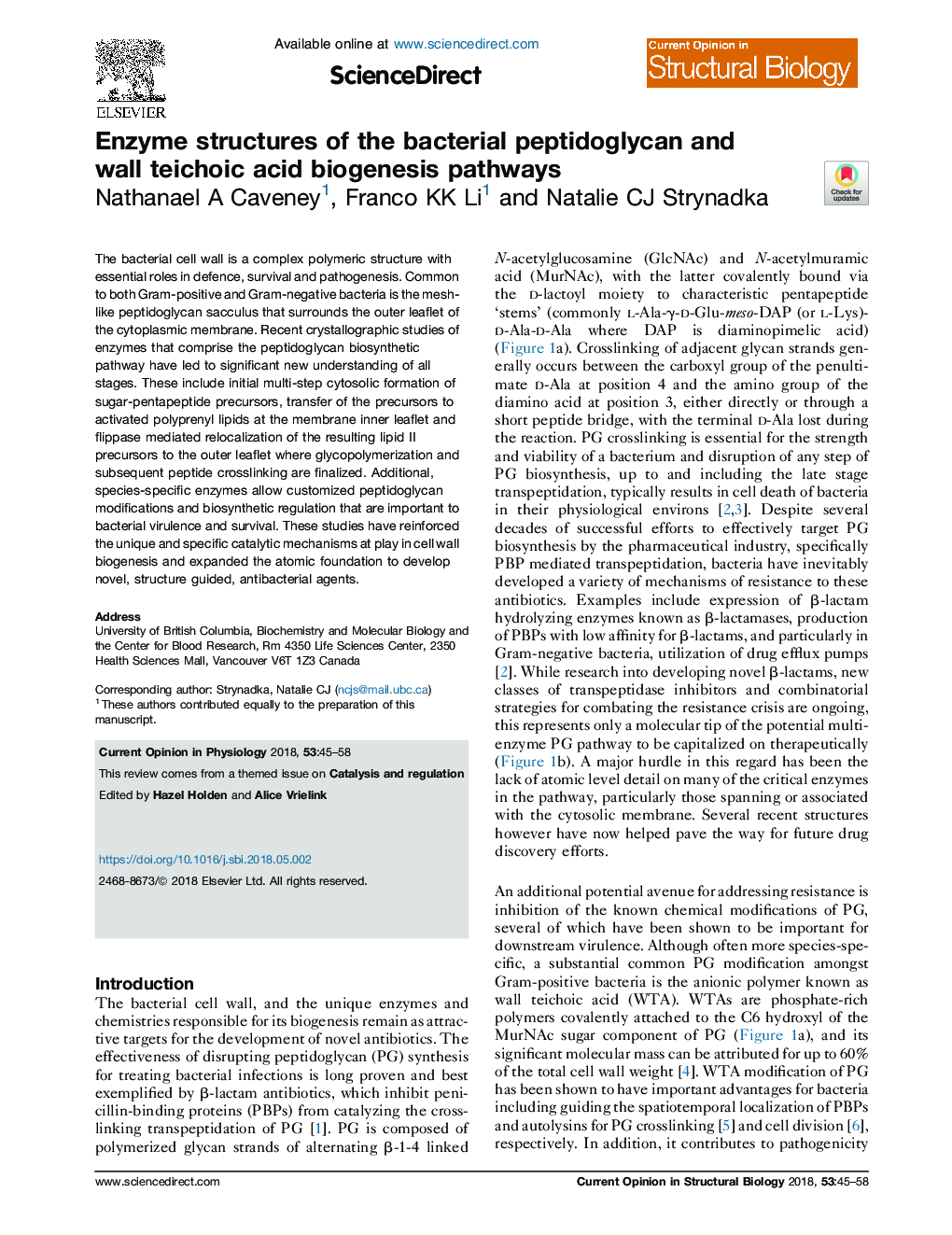| Article ID | Journal | Published Year | Pages | File Type |
|---|---|---|---|---|
| 8319330 | Current Opinion in Structural Biology | 2018 | 14 Pages |
Abstract
The bacterial cell wall is a complex polymeric structure with essential roles in defence, survival and pathogenesis. Common to both Gram-positive and Gram-negative bacteria is the mesh-like peptidoglycan sacculus that surrounds the outer leaflet of the cytoplasmic membrane. Recent crystallographic studies of enzymes that comprise the peptidoglycan biosynthetic pathway have led to significant new understanding of all stages. These include initial multi-step cytosolic formation of sugar-pentapeptide precursors, transfer of the precursors to activated polyprenyl lipids at the membrane inner leaflet and flippase mediated relocalization of the resulting lipid II precursors to the outer leaflet where glycopolymerization and subsequent peptide crosslinking are finalized. Additional, species-specific enzymes allow customized peptidoglycan modifications and biosynthetic regulation that are important to bacterial virulence and survival. These studies have reinforced the unique and specific catalytic mechanisms at play in cell wall biogenesis and expanded the atomic foundation to develop novel, structure guided, antibacterial agents.
Related Topics
Life Sciences
Biochemistry, Genetics and Molecular Biology
Biochemistry
Authors
Nathanael A Caveney, Franco KK Li, Natalie CJ Strynadka,
